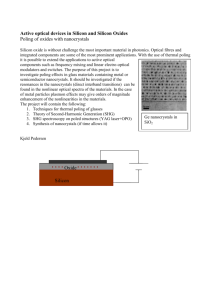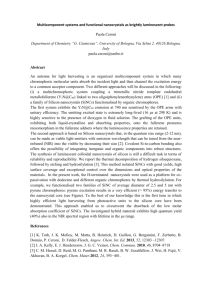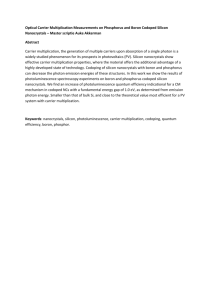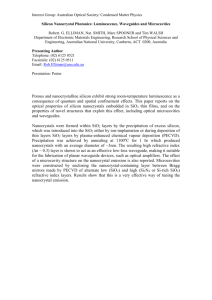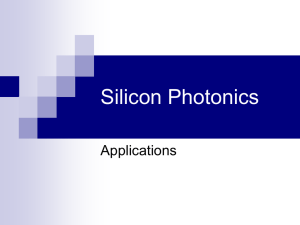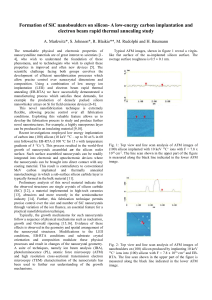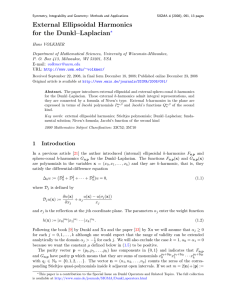Activity 3
advertisement
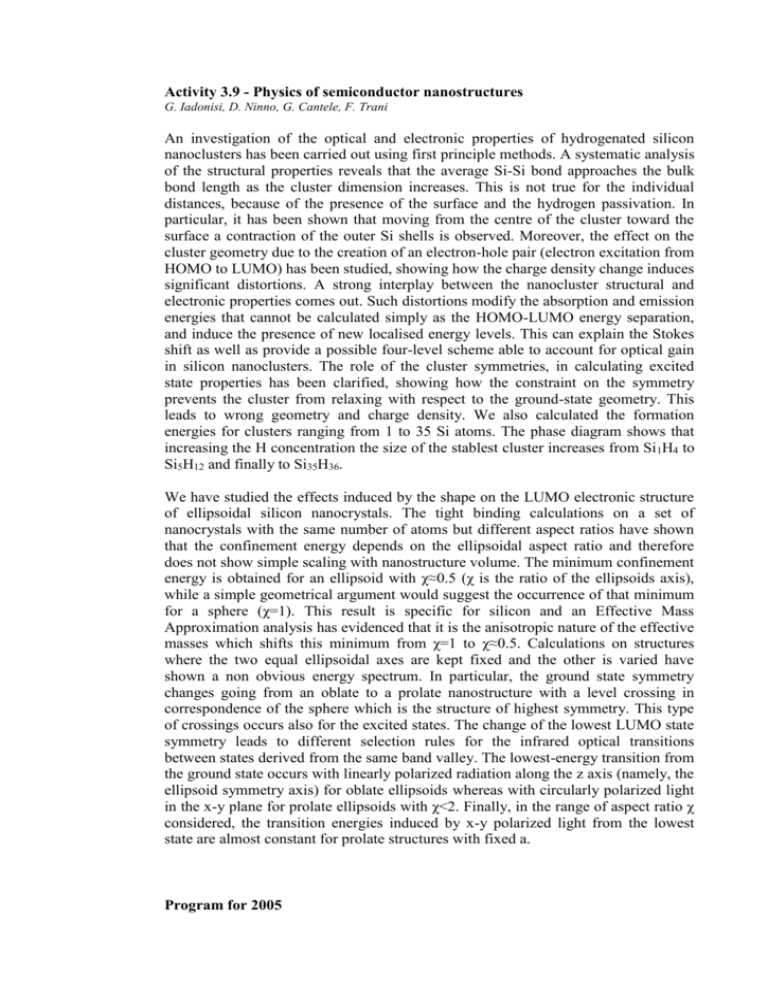
Activity 3.9 - Physics of semiconductor nanostructures G. Iadonisi, D. Ninno, G. Cantele, F. Trani An investigation of the optical and electronic properties of hydrogenated silicon nanoclusters has been carried out using first principle methods. A systematic analysis of the structural properties reveals that the average Si-Si bond approaches the bulk bond length as the cluster dimension increases. This is not true for the individual distances, because of the presence of the surface and the hydrogen passivation. In particular, it has been shown that moving from the centre of the cluster toward the surface a contraction of the outer Si shells is observed. Moreover, the effect on the cluster geometry due to the creation of an electron-hole pair (electron excitation from HOMO to LUMO) has been studied, showing how the charge density change induces significant distortions. A strong interplay between the nanocluster structural and electronic properties comes out. Such distortions modify the absorption and emission energies that cannot be calculated simply as the HOMO-LUMO energy separation, and induce the presence of new localised energy levels. This can explain the Stokes shift as well as provide a possible four-level scheme able to account for optical gain in silicon nanoclusters. The role of the cluster symmetries, in calculating excited state properties has been clarified, showing how the constraint on the symmetry prevents the cluster from relaxing with respect to the ground-state geometry. This leads to wrong geometry and charge density. We also calculated the formation energies for clusters ranging from 1 to 35 Si atoms. The phase diagram shows that increasing the H concentration the size of the stablest cluster increases from Si 1H4 to Si5H12 and finally to Si35H36. We have studied the effects induced by the shape on the LUMO electronic structure of ellipsoidal silicon nanocrystals. The tight binding calculations on a set of nanocrystals with the same number of atoms but different aspect ratios have shown that the confinement energy depends on the ellipsoidal aspect ratio and therefore does not show simple scaling with nanostructure volume. The minimum confinement energy is obtained for an ellipsoid with χ≈0.5 (χ is the ratio of the ellipsoids axis), while a simple geometrical argument would suggest the occurrence of that minimum for a sphere (χ=1). This result is specific for silicon and an Effective Mass Approximation analysis has evidenced that it is the anisotropic nature of the effective masses which shifts this minimum from χ=1 to χ≈0.5. Calculations on structures where the two equal ellipsoidal axes are kept fixed and the other is varied have shown a non obvious energy spectrum. In particular, the ground state symmetry changes going from an oblate to a prolate nanostructure with a level crossing in correspondence of the sphere which is the structure of highest symmetry. This type of crossings occurs also for the excited states. The change of the lowest LUMO state symmetry leads to different selection rules for the infrared optical transitions between states derived from the same band valley. The lowest-energy transition from the ground state occurs with linearly polarized radiation along the z axis (namely, the ellipsoid symmetry axis) for oblate ellipsoids whereas with circularly polarized light in the x-y plane for prolate ellipsoids with χ<2. Finally, in the range of aspect ratio χ considered, the transition energies induced by x-y polarized light from the lowest state are almost constant for prolate structures with fixed a. Program for 2005 Using both first principle methods and our tight binding computational scheme, we shall continue our research on the physical and chemical properties of low dimensional semiconductor systems, with a particular emphasis on silicon. The topics we are developing can be summarized as follows 1. Doping and codoping in silicon nanocrystals, looking for scaling rules for both the impurity binding and formation energies. For this research we shall use a first principle DFT computational scheme. 2. Tight binding calculation of the frequency dependent optical dielectric function for both spherical and ellipsoidal nanocrystals. Here the topic is to understand the connection between the nanocrystal shape and the observed optical anisotropy. 3. Functionalization of the silicon (100) surface with organic molecules such as ethylene and cyclopentene. We shall compute, within DFT, the reaction path, the steric interactions, the surface band structures and the modifications induced by the organic moieties on the surface electron affinities. 4. Microscopic understanding of point charge screening in semiconductor nanocrystals. Here the goal is have a clear understanding of screening effects in nanocrystals and to build a model position dependent dielectric function.
